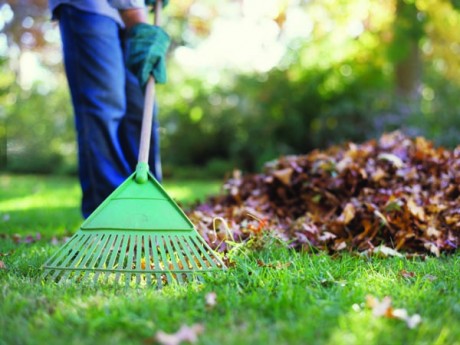Seeding in fall helps heat-damaged yards
With some time, patience and work, you can get your yard back in order

Extreme weather over the summer left a lot of North Carolina lawns and landscapes showing signs of damage. But with some time, patience and work, homeowners can get their yards back in order and ready for the winter.
"Signs of typical summer wear and tear on lawns were amplified as they were stressed by the above-normal temperatures experienced across the United States," said Ben Hamza, director of technical operations at TruGreen, a nationwide professional lawn care service. "Fall is the ideal time to nurture lawns and landscapes to help ensure your yard's health for spring."
Assess
Thoroughly walk your property and inspect the lawn, trees and shrubs. Note patchy areas, where grass has thinned out or is in need of valuable nutrients and appears as light green. Look for weed and plant pest infestations and overgrown trees and shrubs, especially those with the potential for interfering with roof and power lines. Also, consider using a qualified expert to gauge your lawn and landscape needs. Many companies, including TruGreen, offer free lawn analyses.
Replace grass
Fall is the right time to seed bare lawn areas and overseed existing grass to improve lawn thickness and density. Here are several reseeding techniques:
Spot seeding — fills in small areas that are thin or infested with weeds.
Overseeding — generally used for larger areas where the turf is thin, but not bare.
Slit seeding — a premium service using a specialized machine to cut slits into the soil and sow turf seeds directly into the slits.
Lightly rake an inch of surface soil to remove dead debris and properly prepare the area for seeding. Choose a grass seed that is the same type as the grass already growing in your lawn. Lightly apply seed to the soil surface and gently pack to firm the seed into the soil. Apply a light layer of straw or seeding mulch to encourage rapid seed germination. Water lightly until the seed has fully emerged. Do not apply crabgrass preventive to newly seeded areas of your lawn.
Feed roots
Fall feeding gives roots of lawns, trees and shrubs the energy needed to prepare for a healthy spring revival. Be sure to keep fertilizer on target to prevent run-off. If you fertilize your own lawn, follow the product directions and sweep all fertilizer granules that may reach pavement back onto your lawn.
Maintain
Throughout the fall, there are things you can do to maintain your yard's appearance and health:
Rake and clean. Keeping leaves and debris cleared off your lawn will keep your lawn healthier.
Clean up beds, refresh landscape mulch and make sure that no more than two to three inches of mulch remains in the beds.
Do not walk on frost-covered lawns. Doing so may cause brown footprints to appear later. These footprints may remain visible until spring green-up begins.
With these tips, your lawn and landscape can recover from the difficult summer and get back in shape by spring. For more advice, visit www.TruGreen.com.
-
Share this story:

